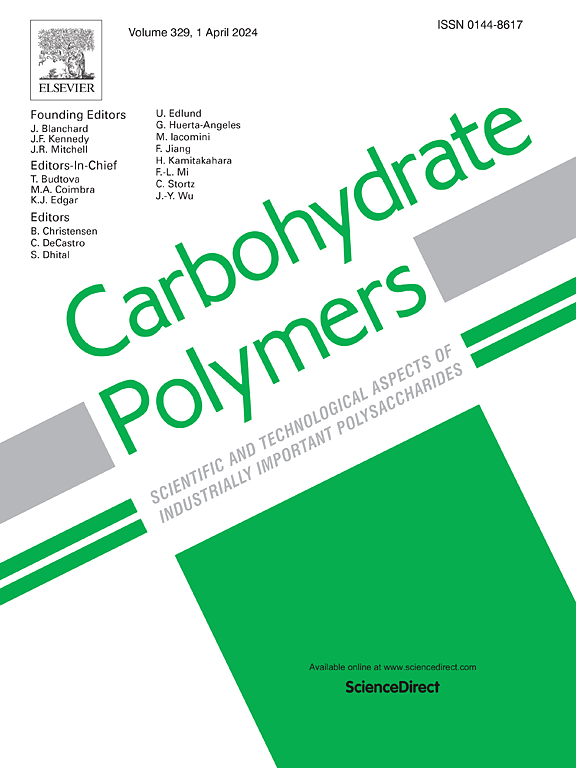Preparation and characterization of tamarind seed polysaccharide-pullulan sublingual films loaded with muco-inert nanoparticles for mucosal co-delivery of BSA and resveratrol
IF 10.7
1区 化学
Q1 CHEMISTRY, APPLIED
引用次数: 0
Abstract
Drug delivery via the sublingual mucosal route presents considerable challenges due to the presence of a complex mucus barrier. To improve the mucus permeability of resveratrol and bovine serum albumin (BSA) and achieve their co-delivery, muco-inert resveratrol-BSA nanoparticles (Res-BSA) were prepared. The mucus penetration of Res-BSA was 3.6 times higher than that of resveratrol and BSA. Res-BSA was incorporated into sublingual films based on mucoadhesive tamarind seed polysaccharide and pullulan (TSP-Pul) to prolong its residence time in the sublingual area. The introduction of Res-BSA enhanced the surface roughness and hydrophilicity of TSP-Pul and preserved the favorable mechanical strength and flexibility of TSP-Pul. The 5 % addition of Res-BSA dramatically increased the initial swelling capacity (435 % at 2 min) of TSP-Pul (284 % at 2 min), and all films completely disintegrated within 60 min. During disintegration, the holes in the internal network of the films became progressively larger and more heterogeneous. The main initial release form of the films containing Res-BSA was determined to be nanoparticles. Compared to TSP-Pul, the addition of 1 % Res-BSA accelerated the release of resveratrol and BSA within the first 2 h. Overall, TSP-Pul containing Res-BSA may be an attractive platform for sublingual co-delivery of resveratrol and BSA.

求助全文
约1分钟内获得全文
求助全文
来源期刊

Carbohydrate Polymers
化学-高分子科学
CiteScore
22.40
自引率
8.00%
发文量
1286
审稿时长
47 days
期刊介绍:
Carbohydrate Polymers stands as a prominent journal in the glycoscience field, dedicated to exploring and harnessing the potential of polysaccharides with applications spanning bioenergy, bioplastics, biomaterials, biorefining, chemistry, drug delivery, food, health, nanotechnology, packaging, paper, pharmaceuticals, medicine, oil recovery, textiles, tissue engineering, wood, and various aspects of glycoscience.
The journal emphasizes the central role of well-characterized carbohydrate polymers, highlighting their significance as the primary focus rather than a peripheral topic. Each paper must prominently feature at least one named carbohydrate polymer, evident in both citation and title, with a commitment to innovative research that advances scientific knowledge.
 求助内容:
求助内容: 应助结果提醒方式:
应助结果提醒方式:


